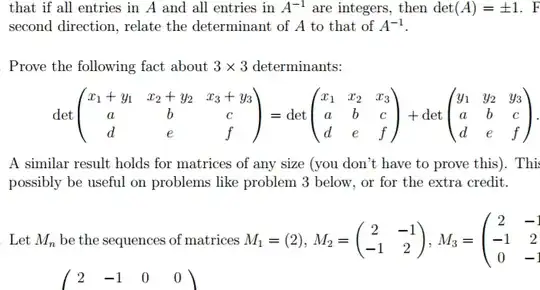
It makes sense that this works, but how do I go about proving it without just throwing in numbers and calling it good?

It makes sense that this works, but how do I go about proving it without just throwing in numbers and calling it good?
You have several options:
Just Do It. Compute both sides of the equation (using e.g. expansion by minors to compute the determinants) and then check that both expressions are equal (for example, by grouping terms involving $x_i$ and $y_i$ and checking that the coefficients are equal). It sounds like this is the intended solution to the problem, and is certainly the most straightforward approach. But it won't give you a lot of insight.
Prove that the determinant in general is a multilinear function of the entries. There are many ways to argue this fact, both algebraic and geometric, depending on your definition of the determinant. See this question for some hints on how to get started.
Hint: Using the "Laplace expansion" of the determinant, we can write $$ \det \pmatrix{x & y & z\\a&b&c\\d&e&f} = \det\pmatrix{b&c\\e&f}x - \det \pmatrix{a&c\\d&f}y + \det \pmatrix{a&b\\d&e}z $$ Expanding both sides in this fashion should make the desired equality clear.